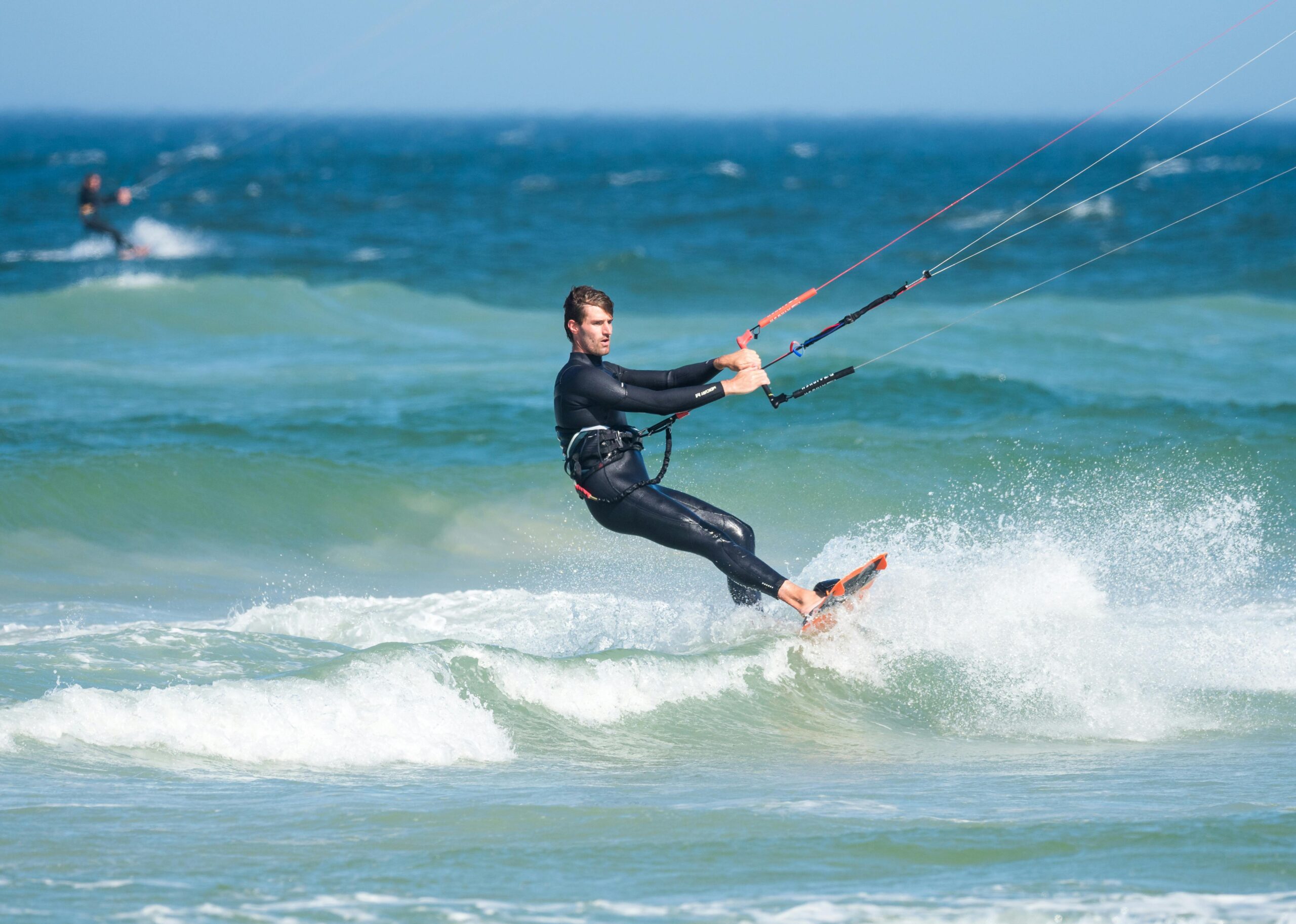When it comes to kite surfing, having the right board and choosing the correct surfboard leash length is crucial for safe and effective sports performance. What length should your surfboard leash be? Is there a specific method to determine this? We’ve compiled a detailed guide to help you make the best choice tailored to your needs.
The Rule of Thumb: Match Your Leash to Your Board Length
A general rule when choosing a surfboard leash is to opt for a length that matches your board’s size. In scenarios where your board falls within the gap of standard leash lengths, it’s advisable to size up to maintain safety and functionality. For additional insights on how to match your leash with your board, you might find this article on choosing the right surfboard leash useful.
Recommended Leash Lengths & Thickness by Surfboard Type
For better understanding, we’ve put together an intricate table illustrating usual board lengths with recommended leash sizes and thickness:
| Board Type | Typical Board Length | Recommended Leash Length | Recommended Leash Thickness |
| Shortboards | 5’6”–7’0” | 6–7 feet | 5-6mm (comp), 7-9mm (regular) |
| Funboards | 7’0”–8’6” | 7–8 feet | 7-9mm |
| Longboards | 9’0”–12’0” | 9–10 feet | 7-9mm |
| Kids’ Boards | Typically under 4’ | 4 feet | 5-6mm |
| SUP or Oversized Boards | 12’ or more | 10–12 feet | 7-9mm |
Why Leash Length Matters
Comprehending why surfboard leash length is important will aid you in taking your decision wisely.
Why a Short Leash Could Be Risky
When your leash is too short, the chances of your board rebounding and hitting you during wipeouts increase, upping the risk of injury.
Why a Long Leash Might Be Troublesome
An excessively long leash can create drag and is vulnerable to tangling, which becomes particularly problematic in small or crowded surf conditions.
Benefits of Making the Right Choice:
Opting for the correct leash length ensures safety, enhances durability, and improves overall surfing performance. For more opinions on the impact of leash length, you can check discussions like Should I go for a shorter leash?.
Other Key Factors to Consider
Wave Conditions
Big Wave Surfing: For larger waves, a longer, thicker, and more durable leash is suitable as it can handle the power and pull.
Small or Calm Waves: In calm waters or small waves, a thin, lightweight leash will minimize drag thus maximizing speed.
Skill Level
Beginners: Novices in surfing should stick with a slightly thicker leash as it can assure safety even if it creates marginal drag.
Experienced Surfers: Expert surfers may opt for thinner, performance leashes that can assist in rapid and precise maneuvers.
Board Size and Weight
Larger or heavy boards like longboards or SUPs demand thicker and robust leashes to account for their weight and control in rough surf conditions.
Pro Tip: Always choose a leash that provides a balance between safety and performance, addressing your skill level and wave conditions.
Beyond Length: Thickness, Material & Attachment
While primarily focusing on leash length, considering leash thickness, material & attachment is also vital.
Leash Thickness
- Thicker leashes are more durable and thus ideal for dealing with larger waves and heavier boards.
- Thinner leashes offer better performance for surfers seeking speed and less drag.
Leash Material & Attachment
- Most leashes are made from urethane, a strong yet flexible material. For high-quality swivels and ankle straps to avoid tangling or breakage, rely on trusted brands.
- Non-compromising comfort is necessary with the ankle strap. Look for straps manufactured from neoprene or similar materials for maximum comfort and durability.
- High-quality swivels are crucial in preventing the leash from tangling. Swivels need to be durable and should rotate freely to minimize knots and tangles.
Popular Surfboard Leash Brands to Consider
Choosing from a trusted brand ensures you get a comfortable, functional, and long-lasting leash. Below are some top recommendations:
- Ocean and Earth Premium One XT: A durable leash suitable for all wave conditions.
- FCS Freedom Leash: Light in weight, designed specifically for performance surfing.
- Dakine Kainui Leash: Ideal for longboards and powerful water conditions.
- Wave Tribe Eco Leash: Manufactured from environmentally friendly materials.
- Creatures of Leisure: Offers regular and large wave leashes with varying thicknesses.
- Woowave Premium Leash: An affordable option suitable for beginners in surfing.
Performance Impacts of the Leash
Choosing the apt leash length improves:
Safety: It prevents board rebounding dangerously close to your body.
Maneuverability: A right-sized leash reduces drag, thereby improving speed.
Ease of use: Longer leashes tangle in small waves, while short ones can tamper safety in bigger surf conditions.
Quick Tip: Keep a backup leash ready in case of emergencies or sudden breaks.
Resources for Personalized Advice
If you’re still uncertain, leverage community resources for personalized tips and recommendations:
Online Communities and Q&A
Reddit (/r/surfing) has engaging discussions on leash choices from real surfers.
Local Surf Shops and Rentals
Local surf shops provide expert advice based on your board type and surfing style.
DIY Research on YouTube and Gear Reviews
Tutorials or reviews can give insights into different leash performances in variable conditions.
Additional Written Guides
- Choosing the Right Surfboard Leash
- Surf Leash Buyer’s Guide for 2023
- What Size Leash Should I Get for My Surfboard?
Summary: How to Pick the Perfect Surfboard Leash
While choosing the right leash is crucial for safety and comfort during surfing, keep these points of consideration in mind:
- Match leash length to board length, size up if required.
- Take wave conditions and skill level into account when selecting thickness.
- Choose a trustworthy brand for reliable durability.
- Avoid leashes that are too long/short.
- Use online communities or local experts to refine your understanding.
With the perfect surfboard leash, you’ll be gliding through the waves seamlessly, oozing confidence at every wave break!
